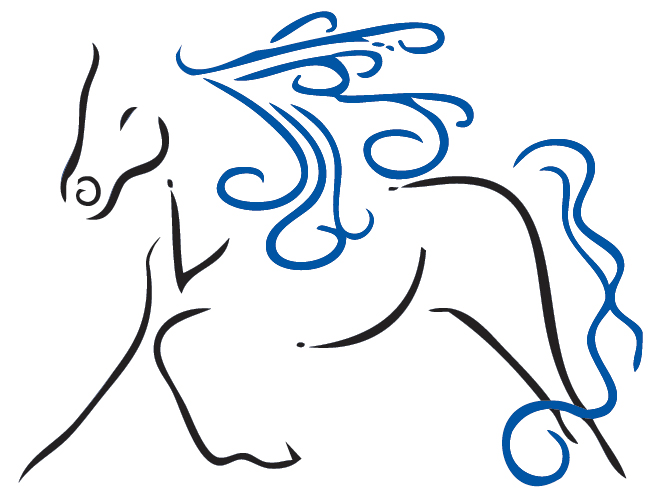Listening and taking the time it takes
I get called in all sorts of circumstances. Sometimes the horse is recovering from an injury or accident, sometimes it's for general maintenance. And sometimes, the owner just knows something is not right. No obvious lameness, but lots of behavior or performance issues.
About a year ago, I worked on a young hunter/jumper who had started acting up. His rider said: he just doesn't feel right. The horse had started bucking and also started kicking out while being ridden. He never came up lame, but something was amiss. When his owner tried to do some basic bodywork on him, he actually chased her out of his stall!
When he presented himself, his whole body felt like it was stuffed into a straight jacket. Every time he moved, it would "pull" throughout his entire body making him very uncomfortable. And in response, he braced even more, creating layer upon layer. Just touching him was so overwhelming to his entire system, his veterinarian was not even able to palpate him. This bracing response not only happened in his body but also his mind and emotions. He would not even allow an overall evaluation and so I decided to start somewhere, anywhere. Where could I find my way in?
I had to go slow. Very slow. Always paying attention to his expression, his response. This allowed his body to not brace against what I was asking - to let go. Once the patterns started to unravel, you could see the relief in him. It didn't always go smoothly. He had become so defensive, that in the beginning he exhibited some dangerous behavior before letting go. He would try and run me over, bite, strike, throw his whole body in my direction. I had to say "No, this is not allowed" firmly in several ways and keep both of us safe. We had to set boundaries because he was really fast. One second he was deeply relaxed, the next he was highly reactive. Staying under the bracing response is not always easy! And staying safe, both the horse and the practitioner, is of utmost importance.
The reason I am writing about this is that sometimes owners have a somewhat romantic view of bodywork. "My horse will be so relaxed! This will be so nice for him! He will feel so good getting this massage."
And yes, that is the ultimate goal, but sometimes horses have accumulated so many layers, they are in full on survival mode. We have to recognize that while the horse will ultimately feel relief after the release of tension, getting there sometimes is quite a journey. As a prey species, their survival instinct is high. They are stuck in the sympathetic nervous system response - which is where the flight/flight/freeze response resides.
To get them to switch to the parasympathetic nervous system can be a challenge in these types of situations. But that's really where the magic happens.
It's important to realize that I am not the one who releases the tension. I only create an opening so to speak for the body to do "its thing". It's really quite amazing to see the incredible changes when you take the time to listen and not just go in like a bulldozer. It is not just about a physical change.
Within an hour, he had released enough tension where he could start relaxing throughout his entire body. His eyes softened, his posture changed. His owner commented on how his head was lowering, how he cocked his hindlegs, going back and forth. His ribcage became fuller, his chest wider. He looked like he had gained weight. His breathing became deeper.
It took about six months for this horse to let down enough for him not to flip back into defense when I worked on him. It also involved a totally different training approach, basically starting from scratch. There were many reasons this young gelding ended up in this situation. But he had very dedicated owners who paid attention even though he never took a lame step and listened. Gave him the time he needed to get back to a more balanced state of being.
His owner is now performing the bodywork after getting some training. My hat is off to her because getting chased out of the stall by him and still not giving up takes some courage.
I hope this gives you a different perspective on bodywork. Horses do not always show up with a lameness problems when they are hurting. Listen to your horse, really question the typical answers regarding his behavior. Dig deeper. Your horse will thank you for it.
Let me know your what you think and if you have experienced a similar situation. Would love to hear from you!
Daniela


